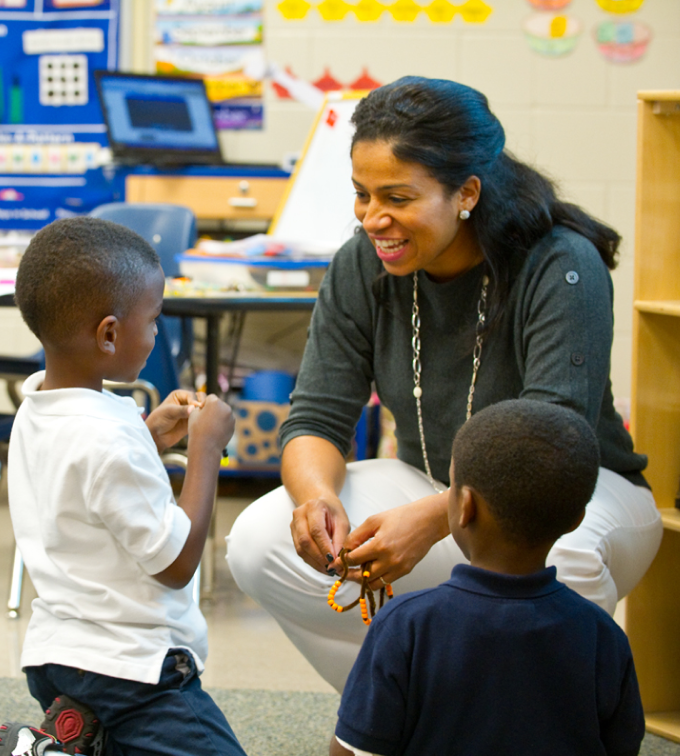A Comprehensive Overview to the Numerous Learning Approaches in Primary Science Instruction
The exploration of varied discovering techniques in primary scientific research guideline provides an opportunity for instructors to boost trainee engagement and comprehension significantly. By checking out hands-on discovering techniques, inquiry-based methods, and collective strategies, we can recognize efficient practices that deal with different learning designs. Additionally, the assimilation of innovation and distinguished instruction plays a vital function in cultivating an inclusive setting. The inquiry remains: exactly how can these methods be efficiently applied in the classroom to maximize their influence? The answer exists in a closer examination of each approach and its ramifications for training science.

Hands-On Knowing Techniques
Hands-on knowing methods play a crucial duty in key scientific research direction, involving pupils in energetic expedition and trial and error. These methods allow students to interact directly with phenomena and products, fostering a much deeper understanding of clinical principles. By using manipulatives, designs, and real-life experiments, teachers produce an atmosphere where trainees can observe, hypothesize, and evaluate their ideas.
Such techniques not only improve understanding however also grow essential thinking and analytic skills. When students take part in activities like constructing straightforward equipments, growing seeds, or carrying out chain reactions, they are encouraged to ask questions and look for solutions with their own observations. This experiential technique aids to debunk intricate clinical principles, making them more accessible and relatable.
In addition, hands-on discovering promotes cooperation amongst peers, as trainees frequently operate in teams to carry out experiments or share findings. This synergy not only improves their discovering experience however additionally establishes important social abilities. Eventually, incorporating hands-on methods in key science instruction promotes a lifelong love of discovering and curiosity regarding the natural globe, laying a solid foundation for future academic quests in science and past.
Inquiry-Based Learning
Inquiry-based discovering is an instructional technique that urges trainees to ask inquiries, investigate sensations, and create their very own understanding of scientific ideas. This approach shifts the focus from traditional teacher-led direction to a more student-centered experience, where learners take the effort in their instructional journey. By fostering interest, inquiry-based understanding promotes deeper interaction with the product, permitting students to check out subjects in a purposeful context.
In practice, this method commonly entails hands-on experiments, observations, and crucial thinking tasks that line up very closely with the clinical approach. Students are encouraged to formulate hypotheses, style examinations, and assess information, which grows essential skills such as analytical and problem-solving reasoning. The function of the educator in this framework is to facilitate exploration, guiding students via the questions process while encouraging independent thought and collaboration.
Moreover, inquiry-based understanding supports a feeling of ownership over the knowing process, motivating students to seek expertise actively. This method not only boosts understanding of clinical concepts but additionally cultivates a lifelong love for knowing, gearing up students with the abilities needed to navigate an increasingly intricate world.
Collaborative Knowing Approaches
Collaborative understanding approaches equip pupils to take part in purposeful interactions with peers, cultivating a common responsibility for their academic outcomes. In key science direction, these methods encourage students to work together to check out scientific principles, fix troubles, and carry out experiments (primary science tuition Singapore). By getting involved in group tasks, pupils can leverage diverse point of views, enabling richer understanding and retention of clinical understanding
One key facet of joint learning is the emphasis on communication skills. Students must articulate their thoughts, listen actively to others, and negotiate ideas, every one of which are crucial competencies in both academic and real-world contexts. This social interaction not just enhances their understanding of clinical concepts yet additionally advertises teamwork and conflict resolution abilities.
Moreover, joint knowing usually causes boosted motivation and engagement. When students see the worth of their payments within a group, they are most likely to take ownership of their knowing journey. Teachers can promote this process by developing organized team tasks that straighten with curriculum objectives while supplying assistance on effective cooperation techniques. Overall, including collaborative understanding techniques in primary scientific research instruction grows a dynamic understanding atmosphere that prepares pupils for future academic and social obstacles.
Modern Technology Integration in Scientific Research
The assimilation of technology in main scientific check my blog research guideline enhances discovering experiences by giving innovative tools and resources that sustain various training methodologies, including collective understanding - primary science tuition Singapore. Using digital platforms, simulations, and interactive applications enables trainees to involve deeply with clinical principles, helping with a much more hands-on strategy to understanding
Virtual laboratories, for example, enable learners to carry out experiments safely and successfully, promoting inquiry-based knowing. These tools can replicate real-world scientific situations, allowing pupils to imagine intricate processes that would be challenging to duplicate in a standard classroom setting. Additionally, technology fosters interaction and collaboration amongst trainees, as they can share findings and work together on tasks via on the internet platforms.
In addition, multimedia discussions and instructional videos can enrich lessons by providing to varied discovering styles, making abstract principles a lot more available. Data evaluation devices additionally equip students to gather and interpret clinical data, enhancing important believing abilities. On the whole, the tactical consolidation of technology in main science direction not only improves involvement however Learn More additionally prepares trainees for a technologically sophisticated culture, furnishing them with essential skills for future clinical endeavors.
Separated Instruction Methods
Distinguished guideline techniques are necessary for addressing the diverse demands of students in primary science education and learning. These strategies allow instructors to tailor their mentor techniques to suit differing abilities, rate of interests, and discovering designs within the class. By employing distinguished direction, educators can create an inclusive environment that cultivates involvement and enhances understanding of scientific concepts.
One efficient method is to use flexible organizing, which permits students to collaborate with peers at similar ability degrees or with varying viewpoints. This strategy encourages peer understanding and advertises crucial thinking. Furthermore, supplying selections in assignments can equip students, permitting them to pick tasks that reverberate with their rate of interests while still satisfying curricular objectives.
Moreover, incorporating tiered jobs is an additional beneficial strategy. By creating tasks with varying degrees of complexity, educators can ensure that all pupils are properly challenged, regardless of their proficiency. Making use of developmental assessments to determine recognizing additional enables educators to adjust their educational techniques dynamically, making certain that each student receives the assistance they need.
Ultimately, applying distinguished instruction methods in primary scientific research education not just enhances pupil knowing end results however additionally cultivates an interest for science, preparing trainees for future academic quests.

Final Thought
In recap, efficient primary scientific research instruction demands a multifaceted strategy that includes hands-on learning, inquiry-based approaches, and joint methods. The integration of modern technology and separated guideline even more provides to diverse discovering styles, promoting a setting for exploration and important thinking. By executing these approaches, educators can improve pupil engagement and comprehension, inevitably supporting a lifelong enthusiasm for scientific web research and inquiry. Such extensive techniques are important for establishing educated and interested future scientists.
The exploration of diverse knowing methods in primary science instruction presents an opportunity for educators to enhance pupil involvement and understanding dramatically.Hands-on understanding strategies play an essential function in main science guideline, involving trainees in active exploration and experimentation.Inquiry-based learning is a training strategy that encourages students to ask questions, explore sensations, and create their own understanding of scientific concepts.Joint discovering methods empower pupils to engage in meaningful communications with peers, fostering a common obligation for their educational results. In general, incorporating collective learning strategies in main scientific research direction grows a dynamic understanding atmosphere that prepares pupils for future scholastic and social challenges.